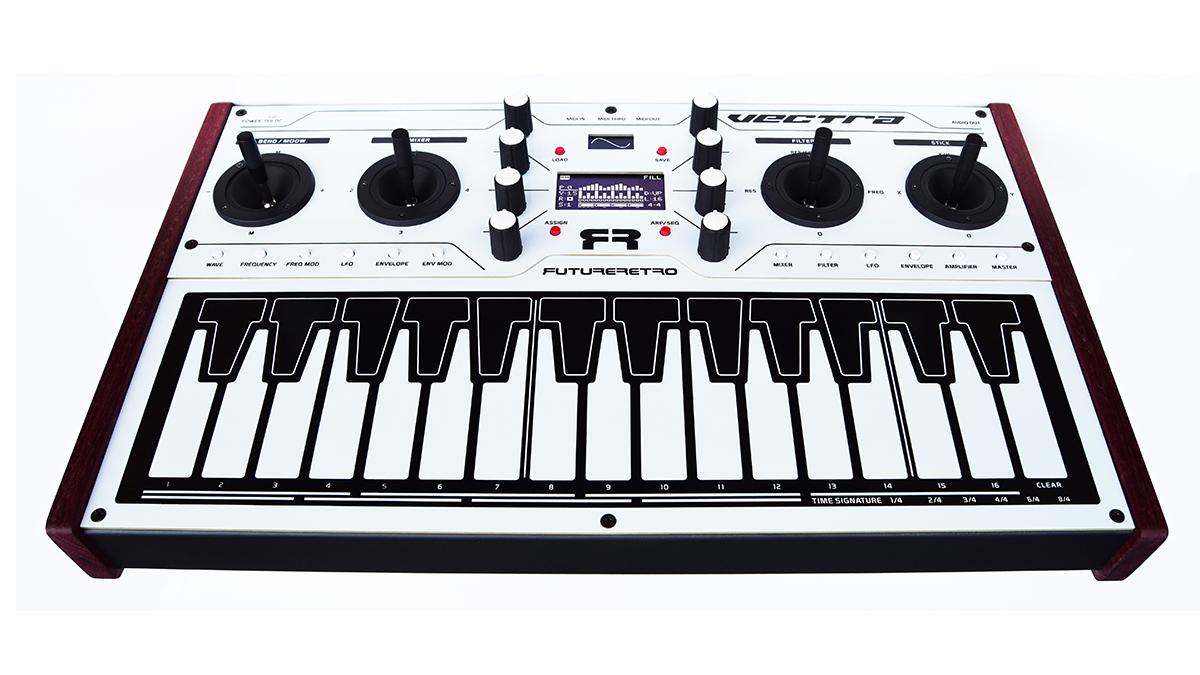Future Retro’s eye-popping Vectra synth is now available for pre-order
Joysticks and a capacitive keyboard make it stand out from the crowd
With its 29-note capacitive touch keyboard and prominent joysticks, the new Future Retro Vectra looks quite unlike any other synth on the market. Whether that will be to its benefit or detriment remains to be seen.
It certainly offers plenty of features: four oscillators, white and pink noise sources, four ring modulators, a four-channel mixer, five LFOs, six morphing envelopes, six primary multimode analogue filter types, a main analogue VCA, and numerous internal modulation routings and VCAs controlling modulation amounts.
Future Retro says that the Vectra nods to synthesis techniques of the past while bringing some new ideas to the table. The digital oscillators offer standard analogue modelled waveforms and a further 500 digital waveforms, and we’re told that a wide variety of sounds can be created.
There’s an arpeggiator and sequencer, too, while standard MIDI ports mean that Vectra can easily be hooked up to other gear in your studio.
Although the interface is definitely unique, it’s designed to be easy to use, with the assignable joysticks making it truly hands-on. Buttons, knobs, and a central display are also present.
Vectra can be pre-ordered now and costs $1,100 plus shipping. A $550 deposit is required to place a pre-order; once Future Retro has received 100 orders, it’ll begin ordering parts and putting the synth into production. Shipping is expected to begin in spring 2022.
Find out more on the Future Retro website.
Get the MusicRadar Newsletter
Want all the hottest music and gear news, reviews, deals, features and more, direct to your inbox? Sign up here.




I’m the Deputy Editor of MusicRadar, having worked on the site since its launch in 2007. I previously spent eight years working on our sister magazine, Computer Music. I’ve been playing the piano, gigging in bands and failing to finish tracks at home for more than 30 years, 24 of which I’ve also spent writing about music and the ever-changing technology used to make it.
“A synthesizer that is both easy to use and fun to play whilst maintaining a decent degree of programming depth and flexibility”: PWM Mantis review
“Do you dare to ditch those ‘normal’ beats in favour of hands-on tweaking and extreme sounds? Of course, you do”: Sonicware CyDrums review









